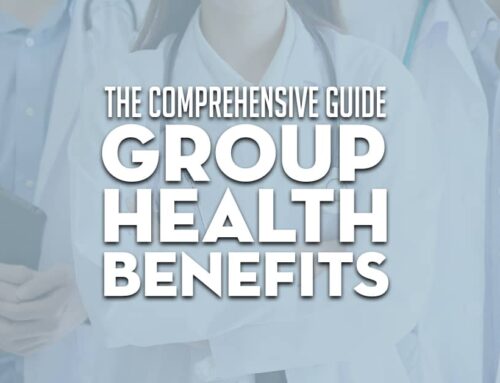There are dozens of acronyms to be aware of when working with health insurance and employee benefits. For instance, you might hear things like HMO, RBP, EPO, and PPO when it comes to insurance plans. Other terms are important to understand, like copay and deductible. It can be a lot of information to take in if you aren’t already familiar with it all.
Since it can be challenging to understand the difference between many of these acronyms, we wanted to create and share a guide that breaks down what makes each of these unique. We’ll go over what each of these plans is so you can make the best decision when it comes to employee benefits.
PPO (Preferred Provider Organization)
The partner provider organization is going to have higher costs than an HMO, which we’ll describe below. However, there’s a lot more flexibility with a PPO. For instance, you do not need a referral to see a specialist or an out-of-network physician. That said, staying in the network keeps coinsurance and copays relatively low.
Who is a PPO best for? It tends to be used by people who are aware they will need a decent amount of health care in the next year and are okay to pay higher premiums. There is a preferred network but there’s no need to choose a specific primary care physician.
When you choose to see someone outside of the network, you’ll pay more but the plan is still going to cover some portion of the visit. Because of this, those with a PPO have more choices and can access providers that might not be available with EPOs, HMOs, or RBPs.
EPO (Exclusive Provider Organization)
Next up is the exclusive provider organization, which is less known than some of the others we’ll be talking about. However, like HMO which we’ll talk about soon, an EPO only covers in-network care. The difference between the two is that this health care plan generally has larger networks.
In addition, referrals may or may not be needed from a primary care physician to see a specialist. The premiums tend to be lower than you’ll see from a PPO but higher than those for an HMO. It sits in the middle and tends to be a popular choice for that reason. It may not be the best at everything but it’s pretty good at all facets expected for a healthcare plan.
You can think of an EPO as a mixture between a PPO and an HMO. There’s a bit more flexibility than with HMOs with a better price than a PPO. If those with an EPO choose to seek care outside of the network, that results in paying out-of-pocket.
In general, EPOs are best in a situation where you want to see specialists without needing to rely on referrals from a primary care physician. You need to stay within the network but you get more choices about whom to see. Unless you need to specifically see several doctors who might not be in the network, this is a good choice.
HMO (Health Maintenance Organization)
Health maintenance organization plans are among the most affordable types. It may have coinsurance but also offers lower deductibles and premiums. Fixed copays for doctor visits are also common. This type of insurance plan is a good option for those with few health issues and a strict budget.
While using an HMO, you’ll need to use doctors in the network. You choose a physician when signing up and see them for regular appointments. This doctor can give you referrals when you need to see specialists. Since your primary care physician has a lot of control over what happens, you need to find one your trust.
You can think of the primary care physician as the head of your team. They’ll handle all the basic care and coordinate with others as needed for other care. When you need tests or special care, their referral will get you into the office. All providers will be in-network.
If you decide to see someone outside of the network or have no referral, you can expect to pay the costs out of your pocket. There may be exceptions for emergencies but those are rare. When choosing an HMO, the network is based on local doctors.
RBP (Reference-Based Pricing)
Reference-based pricing offers an alternative to typical pricing and is used to reduce or stabilize the costs of claims. However, most people have never heard of it as an option. That includes both employers and employees.
RBP is a model where claims are paid based on an established benchmark rather than a fee determined by a carrier. Healthcare costs are based on these reference prices instead of the common markups found with other carriers. A few of the benchmarks used include reported wholesale prices, third-party data sets, provider’s reported costs, and Medicare reimbursement rates.
This kind of health care is often used for self-funding plans. Employers pay their own claims instead of having a carrier do that for them. Because of that, the employer experiences huge benefits by keeping payments as low as possible. RBPs can do that while introducing convenience and flexibility at the same time.
There are two main ways that RBP plans can save money. The first is through transparency. Employers can trust the amounts they have to pay since they’re based on evidence. Alignment of incentives is the second, as no insurance carrier is working to bump prices up for a profit.
Final Thoughts
Now that you understand the difference between PPO, EPO, RBP, and HMO, you might be wondering what other steps you should take. Having the right broker in your corner with excellent insurance plans can be a huge help. At Abbot Benefits Group, that’s exactly what you can expect. We’ll help you find the perfect plan for you, your company, and your employees. Reach out to us today to learn more about our offerings and get the coverage you can trust.





